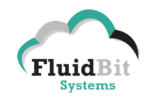
For individuals with severe substance use disorders or co-occurring mental health conditions, sober living can provide a stable and supportive environment while they continue treatment. Programs such as cognitive behavioral therapy (CBT) and dialectical behavioral therapy (DBT) can help address both addiction and underlying mental health issues, improving overall well-being. Recovering from addiction is hard, and having the right support can make a big difference. For many people, a sober living house offers this support in a safe, drug-free setting. Let’s look at what these homes offer, the different types, and how they compare to other places like halfway houses. Maintaining sobriety can be a difficult process, however, a sober living house may provide you with the kind of structure and support you’ll need to maintain your sobriety.

Level One
If you or someone you know is struggling with substance use disorder, you may have heard of the term Sober Living House or Halfway House. Also known as recovery residences or drug-free housing, provide a structured living environment Sober living house for individuals who have completed substance abuse treatment and are seeking ongoing support in maintaining sobriety. One of the fundamental principles of sober living houses is maintaining complete abstinence from substances. Residents are expected to refrain from using drugs or alcohol to create a safe and supportive environment for themselves and their housemates. This commitment to sobriety is reinforced through regular drug and alcohol testing to ensure compliance with the house rules.
Benefits of Sober Living Houses
The opportunity for peer support in sober living homes plays a significant role in recovery. Residents interact and bond over shared challenges, which encourages mutual accountability. This camaraderie not only combats feelings of isolation but also helps develop lasting relationships that provide emotional and practical support during difficult times. Halfway houses are often a step between prison and regular life, while sober living houses are focused recovery spaces that people choose sober house dorchester ma to help them stay sober.

How to Create a Vision Board for Sobriety
- Discover how a child abused amphetamine to boost their grades, and the risks and consequences of substance misuse.
- The purpose of this systematic review is to summarize the existing recovery housing literature on housing residents’ recovery outcomes (e.g., substance use, employment, recovery capital) and housing cost-effectiveness.
- Social activities and events organized within sober living houses play a crucial role in promoting a sense of camaraderie and fun among residents.
If you’re having a hard time adjusting to a sober life, reach out to a mental health professional who specializes in addiction and substance use. They are environments free of substance abuse where individuals can receive support from peers who are also in recovery. While meeting attendance and household duties may be required, there isn’t regimented treatment programming present in the home. Sober living houses are often recommended for folks finishing up a drug rehabilitation program.Leaving the structure of a treatment program can be jarring, sometimes triggering a relapse. As such, sober living houses serve as a space to transition into a life without addiction, developing tools and community while getting used to the demands of daily life.
- People typically stay in sober living for 3 months to a year, depending on their personal recovery needs.
- Meetings were held both in the home and in neighboring organizations in the community.
- They are designed to be a transitional space from residential treatment to mainstream society.
- In the 1950s, groups like Alcoholics Anonymous (AA) and Narcotics Anonymous (NA) highlighted the value of group support and sober housing, leading to the growth of sober living houses across the U.S.
- A sober living home is a structured, substance-free residence that supports individuals recovering from addiction, typically after completing a rehabilitation program.
- We conducted a search across PubMed, EMBASE, CINAHL, PsycINFO and CENTRAL published prior to February 2024.

With little structure and monitoring, someone new in their recovery may want to a higher-level sober living home. Additional resident outcomes also warrant examination in RCTs (e.g., recovery capital, quality of life). Recovery capital is an emerging international construct and organizing framework that describes the internal and external resources brought to bear on a recovery attempt. Quantity, nature, and brief description of published studies from a review of the evidence on recovery housing. At Eudaimonia Homes, we work with each resident to create personalized plans that fit their lifestyles, which is essential, especially for those balancing work or other commitments. Living in a sober environment allows you to connect with others who share similar goals.
